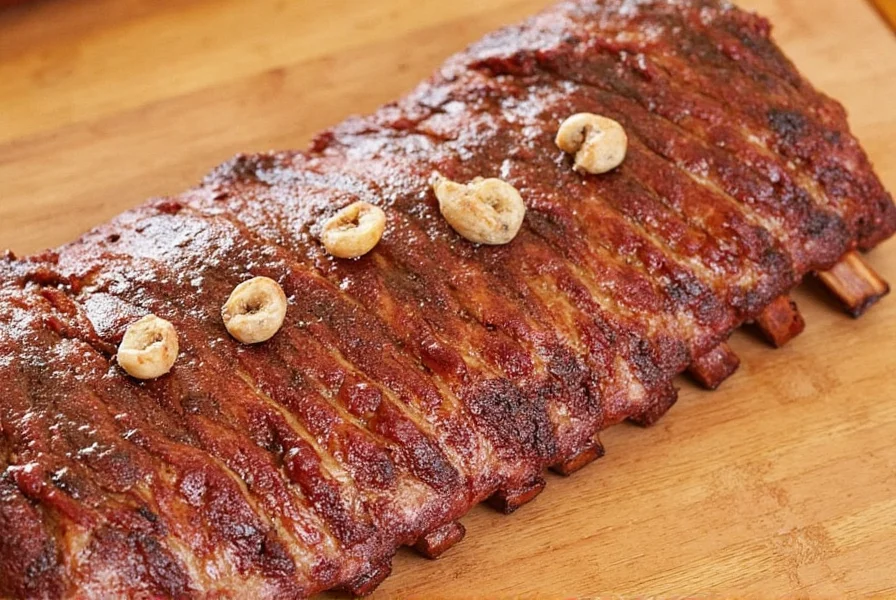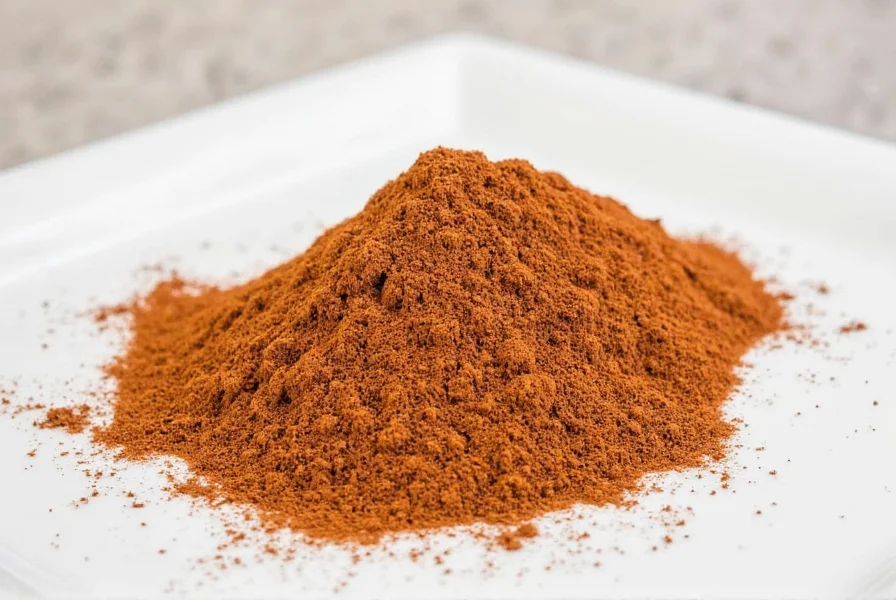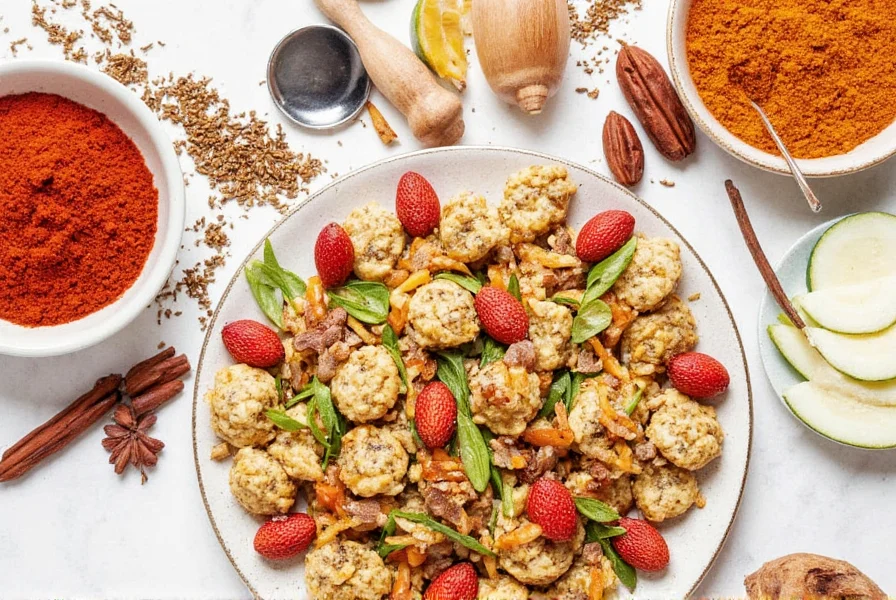What Does 'Spiced' Mean? Clear Definition and Common Misconceptions
'Spiced' refers to food enhanced with spices (dried seeds, roots, bark, or flower parts), which may or may not be hot. This is different from 'spicy,' which specifically indicates heat from chili peppers. Understanding this distinction is crucial for cooking properly and following recipes accurately.

Spiced vs Spicy: The Critical Difference Everyone Gets Wrong
Many people confuse these terms, but they're not interchangeable:
| Term | Definition | Examples |
|---|---|---|
| Spiced | Foods enhanced with dried plant parts (seeds, roots, bark) | Cinnamon toast, turmeric rice, cumin-spiced lamb |
| Spicy | Foods with noticeable heat from capsaicin | Ghost pepper sauce, habanero salsa, cayenne-spiced wings |
| Can be both | Foods with spices that also provide heat | Chili powder rubs, cayenne-seasoned dishes |
Why This Distinction Matters in Cooking
Mixing up 'spiced' and 'spicy' can ruin recipes. Professional chefs emphasize this difference because:
- Recipe accuracy: "Add spices" means flavor enhancers, not necessarily heat
- Flavor balancing: Proper spicing creates depth without overwhelming heat
- Cultural authenticity: Many traditional dishes are highly spiced but not spicy
- Health considerations: People with sensitive stomachs can enjoy spiced foods without heat
The Science Behind Spiced Foods
Spices work through complex chemical interactions that enhance flavor perception:
| Spice Component | Chemical Compound | Flavor Effect |
|---|---|---|
| Cinnamon | Cinnamaldehyde | Warm, sweet aroma |
| Turmeric | Curcumin | Earthly, slightly bitter base note |
| Cumin | Cuminaldehyde | Earthy, nutty foundation |
| Cardamom | Terpinolene | Floral, citrus complexity |

Top 5 Most Misunderstood Spices and How to Use Them Properly
- Nutmeg - Too much creates bitterness; use freshly grated in tiny amounts for creamy sauces and vegetables
- Cinnamon - Ceylon vs Cassia matters; use Ceylon for delicate dishes, Cassia for robust recipes
- Cumin - Must be toasted to unlock flavor; never added raw to dishes
- Turmeric - Needs fat and black pepper for absorption; works best when bloomed in oil
- Cardamom - Whole pods vs ground produce dramatically different results; use pods for infusions, ground for baking
How to Read Recipe Instructions Correctly
Recipes often contain subtle cues about spice usage:
- "Add spices" = Add dried spices early to bloom in fat
- "Finish with spices" = Add delicate spices at the end
- "Spice blend" = Usually pre-mixed spices like garam masala
- "Pinch of spice" = Approximately 1/16 teaspoon
- "To taste" = Adjust after other elements are balanced

Common Spiced Food Myths Debunked
| Myth | Reality | Evidence |
|---|---|---|
| All spiced foods are spicy | Most traditional spiced dishes contain no heat | Indian biryani, Moroccan tagine |
| Spices expire quickly | Whole spices retain potency for 3-4 years | USDA shelf life guidelines |
| More spices = better flavor | Over-spicing creates flavor confusion | Culinary Institute research |
| Ground spices are as good as whole | Whole spices maintain flavor 3x longer | Food science studies |
Expert Tips for Using Spices Effectively
- The Toasting Rule: Always dry-toast whole spices before grinding (except delicate spices like saffron)
- The Oil Bloom Method: Add ground spices to hot oil for 30 seconds before other ingredients
- The Layering Technique: Use 3 spices minimum for complexity: base (cumin), middle (coriander), top (cilantro)
- The Freshness Test: Rub spices between fingers - fresh ones leave color and scent on skin
- The Storage Solution: Keep spices in dark glass containers away from stove heat
Frequently Asked Questions About Spiced Foods
What's the difference between 'spiced' and 'spicy'?
"Spiced" refers to dishes enhanced with various spices (like cumin, cinnamon, or turmeric), which may or may not be hot. "Spicy" specifically refers to heat from chili peppers or other pungent ingredients. A dish can be spiced without being spicy, and vice versa.
How can I tell if a recipe wants heat or just flavor?
Check for specific heat indicators: chili varieties (jalapeño, habanero), "hot", "fiery", or "heat level" mentions. If it just says "spices" or lists specific spices without chilies, it's about flavor, not heat.
Why do some cultures use many spices but no heat?
Many traditional cuisines (like Indian, Moroccan, Persian) use complex spice blends for flavor depth and preservation, not heat. Historical trade routes brought diverse spices, but chilies only arrived in Old World cuisines after Columbus.
Can you make a dish spiced but not spicy?
Absolutely. Use warming spices like cinnamon, cumin, coriander, and cardamom without chili peppers. Many classic dishes like garam masala-based curries or baharat-seasoned meats are highly spiced but not spicy.
How do I fix an over-spiced dish?
Dilute with complementary ingredients: dairy for balance, acid (lemon) to cut through, or starch (potatoes) to absorb excess. For too much heat specifically, add sugar or honey to counteract capsaicin.
Practical Application: Building Your Spice Knowledge
Start with these foundational practices:
- Label your spices with purchase dates
- Keep a spice journal noting what works
- Buy whole spices and grind as needed
- Store spices away from heat and light
- Start with 3 core spices: cumin, coriander, cinnamon
Understanding what 'spiced' truly means transforms your cooking from guessing to intentional flavor creation. By recognizing that spicing is about layering complex flavors rather than just adding heat, you'll gain confidence in the kitchen and create more authentic, balanced dishes.










 浙公网安备
33010002000092号
浙公网安备
33010002000092号 浙B2-20120091-4
浙B2-20120091-4